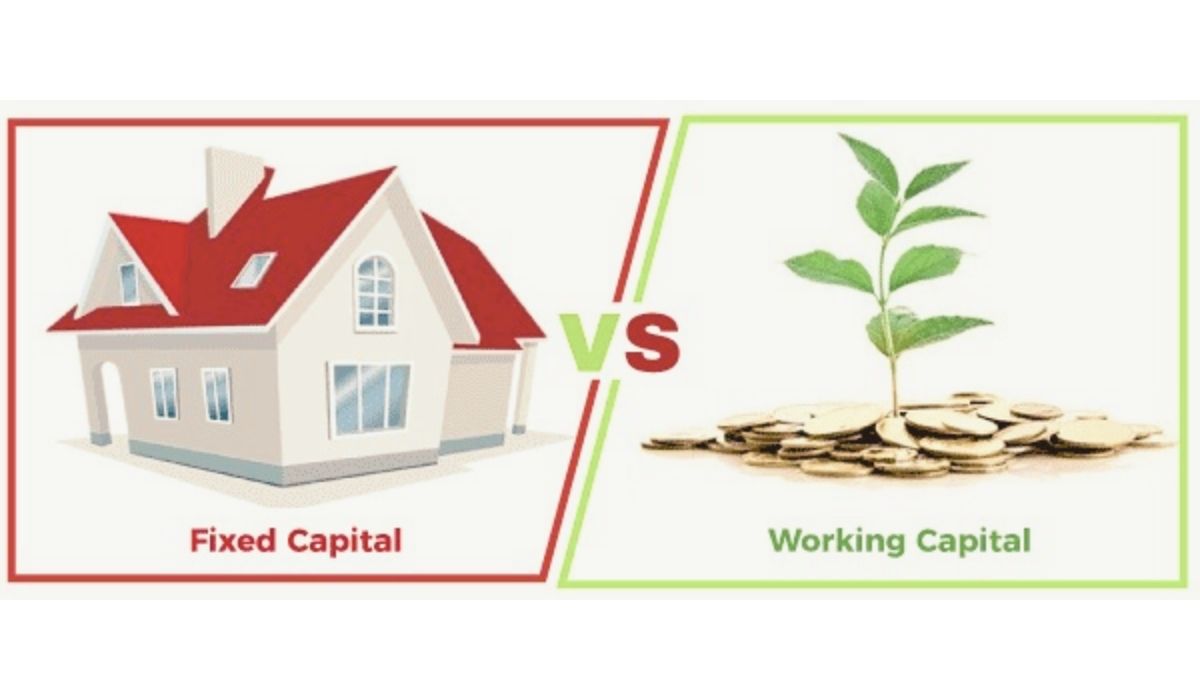Understanding the distinction between fixed capital and working capital is essential for a business owner to ensure the smooth running of the business and effective management. These two forms of capital serve two different purposes, but they are interconnected to ensure a company’s good financial health. Fixed capital includes all the long-term investments like buildings and machinery that are used for production and growth. Meanwhile, working capital covers short-term expenses to ensure the smooth running of daily operations.
It is crucial to know the concept of fixed and working capital because you require a clear understanding of them to ensure effective financial planning in business. It is essential to maintain a balance between long-term investments and short-term liquidity. Cash flow challenges can be avoided effectively by the proper management of fixed and working capital.
What are Fixed Capital and Working Capital?
Fixed Capital:
Fixed capital refers to the long-term investment made by a business in assets like buildings, machines and equipment that are used over many years to produce goods and services. These assets are not used for daily operations of manufacturing but are important for business growth and stability.
Role in Business Operations: Fixed capital enables production and long-term growth and thus supports the core infrastructure of business.
Working Capital:
Working capital indicates the capital that is used to manage the day-to-day operations of a business. These operations include immediate expenses like inventory, salaries and bills.
Role in Business Operations: It is very crucial to maintain working capital for financial stability. Working capital covers the short-term expenses of business like salaries, utility bills and raw materials and ensures smooth functioning.
By knowing the difference and managing both types of capital, businesses can achieve operational efficiency, better resource allocation and also strategic financial planning in business.
Fixed Capital – How does it work?
Fixed capital refers to the funds that a business uses to get long-term assets that are essential for growth and stability. These assets are not consumed daily or exchanged for cash during business activities, they act as the foundation for generating profit over time.
How It Works in Long-Term Investments:
Fixed capital is used to purchase assets such as land, buildings, vehicles and machinery. These assets are used by businesses to produce goods, provide services and expand the business.
These assets are for a long period, thus, they are essential to ensure scalability in the business.
Example:
A manufacturing company buys high-tech machinery to automate the process of production is an example of fixed capital. This machinery, as a fixed capital example, used for production, supports long-term efficiency and contributes to the company’s growth.
Working Capital – How does it work?
Working capital refers to the funds that a business uses for its day-to-day work. It is worked out as the difference between current assets (land, building, machinery, etc) and current liabilities like accounts payable and short-duration loans.
How It Works in Day-to-Day Operations:
Working capital plays a vital role as it ensures that a business has enough liquidity to cover short-term expenses. It helps with daily expenses like salaries, purchasing raw materials, and managing inventory. Effective working capital management helps smooth work and ensures that there are no interruptions due to cash-flow shortages.
Example:
An example of working capital is when a shopkeeper maintains the stock level according to the demands of customers. The shopkeeper uses funds to purchase inventory and keep the shelves occupied with stock, which keeps the customers satisfied.
Difference Between Fixed Capital and Working Capital
Fixed capital differs from working capital in terms of its usage, roles and impact on business operations. Knowing these differences is necessary to understand fixed vs working capital:
| Criteria | Fixed Capital | Working Capital |
| Definition | Funds that are invested in the long-term for growth and stability of the business. | Funds that are used to manage the day-to-day operations of a business for smooth functioning. |
| Nature of Assets | Used to acquire non-current assets which include land and machinery. | Used to manage current assets which include inventory and accounts receivable. |
| Purpose | These funds support long-term operations and promote growth and stability. | These funds support short-term financial needs and ensure liquidity. |
| Duration | Long-term, mostly more than one year | Short-term, mostly within one operational cycle of business. |
| Liquidity | With low liquidity, these assets are not easily converted into cash. | With high liquidity, can be easily converted into cash to meet immediate financial needs. |
Understanding the differences between fixed and working capital, can help businesses use their resources effectively and maintain a balance between long-term growth and short-term operations.
Conclusion
Fixed capital and working capital, both are important for the financial stability and success of any business. Fixed capital secures the long-term growth of the business by providing essential assets for production like buildings and machinery. Working capital facilitates daily operations by meeting short-term financial needs.
To maintain the operations efficiently and promote sustainable growth of the business, it is crucial to maintain a balance in managing fixed capital and working capital. Businesses that understand how important it is to optimize their capital allocation are in a better position to expand in the competitive market.
For more insights on managing your business finances, explore our comprehensive guides available on our official website.
FAQ
What exactly is fixed capital?
Fixed capital refers to the funds that are used by a business to acquire long-term assets like land, machinery and buildings. These assets are not consumed daily but are essential for the production and growth of a business.
What exactly is working capital?
Working capital represents the funds that are used in business for day-to-day expenses. It is calculated as the subtraction between current assets (cash, inventory, accounts receivable) and current liabilities.
What distinguishes fixed capital from operating capital?
The major distinction between fixed capital and working capital lies in their purpose and use within a company. Fixed capital is used to invest in long-term assets essential for growth, such as machinery and buildings while working capital is allocated to short-term assets to support daily business operations. Fixed capital is utilized to acquire non-current assets, whereas working capital ensures the smooth management of day-to-day activities.
What are some instances of working capital?
Some examples of working capital are:
-
- Cash on hand and equivalents
- Inventory purchased for sale
- Prepaid expenses
- Accounts receivable
What are the few examples of fixed capital?
Some examples of fixed capital are:
-
- Land
- Building for office
- Production machinery and equipment
- Vehicle for business operations
What qualifies as a fixed capital?
Fixed capital includes assets that are durable and are not consumed during production. Also, the assets that qualify as non-current. Examples include buildings, equipment, machinery, land and vehicles, all the things that are used for production and ensure growth.
Also, Read:
- Difference Between Secured and Unsecured Loans
- Loan Against LIC Policy
- How to Get a Loan Against Fixed Deposit
- What is the Required Minimum CIBIL Score for a Credit Card?
This post is also available in: हिन्दी (Hindi)




